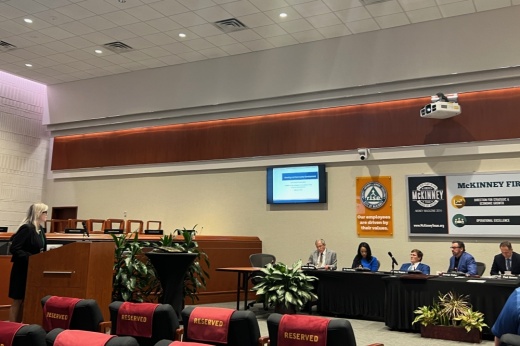City staff presented new data related to homelessness at a May 16 council meeting. The presentation also included an update of the activities of the mayor’s task force on homelessness.
The data was collected through the annual federally mandated point-in-time count of the homeless population in McKinney. The count, which was conducted Jan. 26, provides a snapshot of trends in homelessness over the years.
Quote of note
“[The point-in-time count is] not really a good representation of how many folks are experiencing homelessness in McKinney. It is generally in January or February, very cold, and it is one night out of the year, but it is good for tracking ... trends over time,” said Janay Tieken, the director of the McKinney Housing and Community Development.
By the numbers
Homelessness in McKinney increased nearly 2% compared to data from the 2022 point-in-time count.While the overall number of homeless individuals has increased, the number of youth and chronically homeless individuals has decreased.The approach
The mayor’s task force on homelessness was established in late 2019 at the request of Mayor George Fuller. The task force was formed following concerns from community members about “the increasing visibility of homelessness,” Tieken said.
The task force is not an official city organization but rather a policy committee that includes collaborators from a variety of local agencies and organizations. The task force meets quarterly to develop strategies and assess the needs of homeless individuals in the community.
Some defined goals of the task force include collecting reliable data and demographics and creating a coordinated response to homelessness among city departments, according to the presentation.
Since its creation, the task force has:
- Worked with the city’s Information Technology department to create an application for the police department’s community services team to use to confidentially gather and track information on encampments and homeless individuals
- Utilized the McKinney Emergency Overnight Warming Station as a data collection source
- Over 180 unduplicated individuals utilized the warming center in the 2022-23 fall and winter season.
- Facilitated a training for code services and parks department employees for safety skills when entering homeless encampments
- Partnered with Collin County Transit to provide discounted transit services to 47 clients in fiscal year 2022-23
Explained
The 2019 point-in-time count identified an inability to pay rent or a mortgage as the leading cause of homelessness in Collin County.Point-in-time counts conducted after 2019 no longer include this data in the surveys, Tieken said.
The 2019 survey results concluded 34.8% of respondents had either a substance use or behavioral health issue. While this is not identified as a cause of homelessness, it is considered a contributing factor, Tieken said.
The action taken
City Council members approved designating $70,000 in homelessness prevention and mitigation funding to be used as legal funds and for an anti-panhandling campaign at the May 16 meeting.
The legal funds, totalling $50,000, will be used to provide legal services to homeowners in need of clear title assistance that would allow them to access the city’s rehabilitation funding. The grant-funded program assists in covering home repairs, while the clear title assistance makes homeowners eligible for property tax exemptions, Tieken said.
The legal funds will also be used to assist renters in removing evictions and eviction court appearances off their rental record.
“This removes a barrier that we often see in folks getting and keeping housing,” Tieken said.
The remaining $20,000 in funding was requested to create signage for the “Have A Heart, Give Smart” campaign. The campaign encourages community members to donate to a social service organization that is working to address the root causes of homelessness rather than giving money to an individual that is panhandling, Tieken said.
The signage will be used to create further awareness of the campaign and the safety risks associated with panhandling, Tieken said. Signs will be installed on existing poles and feature QR codes that link to resources and social services that accept donations.
“McKinney residents are very, very generous, and we have a reputation throughout the metroplex as being really good tippers, which is wonderful,” Tieken said. “But it’s probably not a reputation that we really want to have among individuals that live in McKinney ... that we give a lot of money to panhandlers.”
For more information on the campaign, visit www.mckinneytexas.org/825/End-Panhandling.





